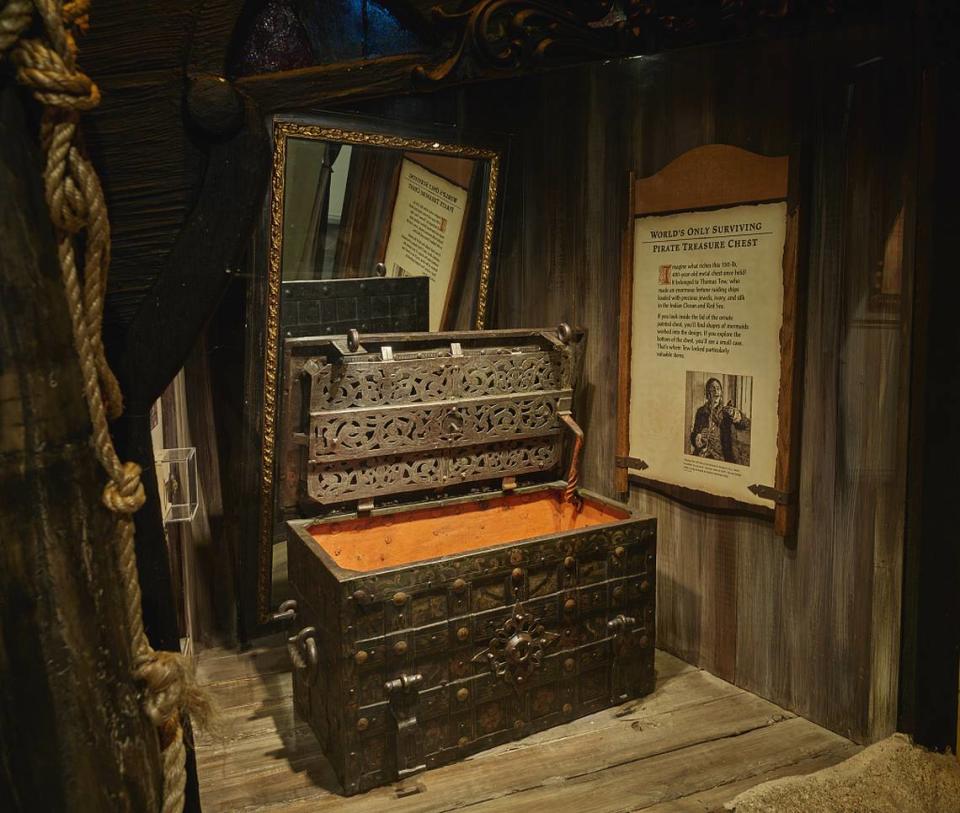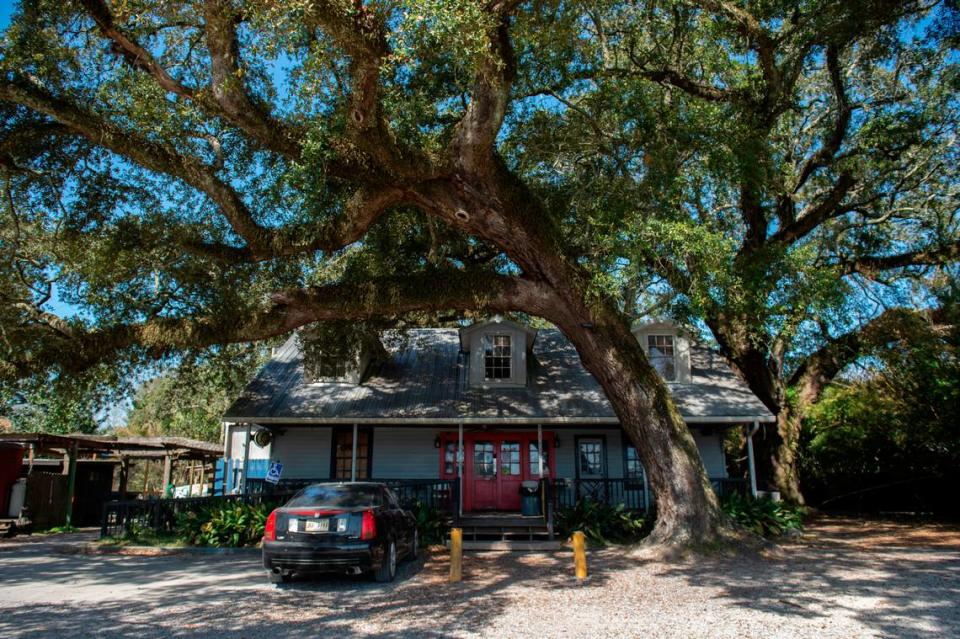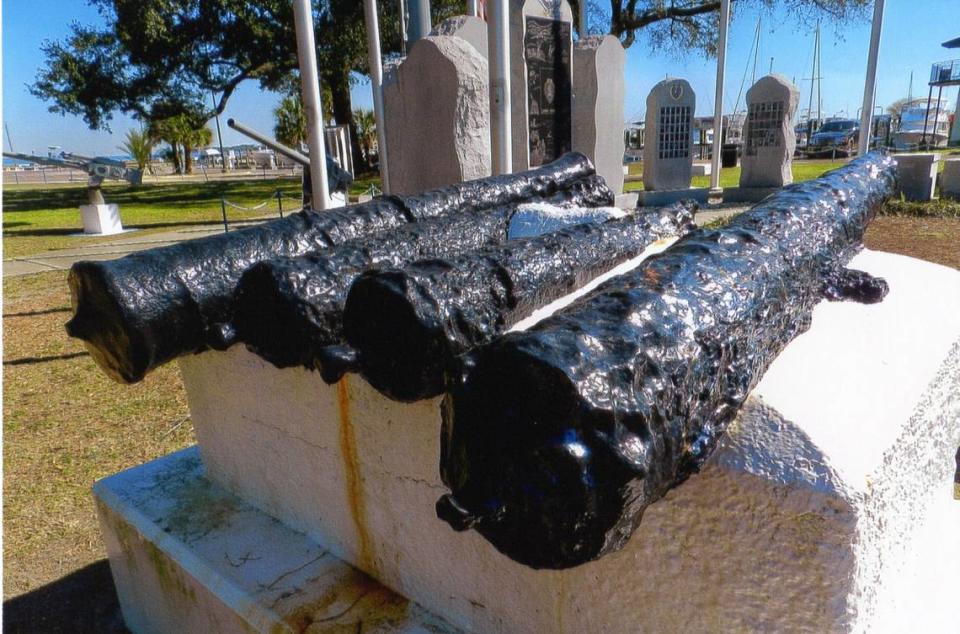A pirate reigned terror from New Orleans to Mobile. Did he bury treasure on the MS Coast?
The Mississippi Gulf Coast experienced a surge in piracy throughout the 18th and 19th centuries, attracting outlaws with a penchant for burying their stolen treasures.
Whispers and rumors of buried pirate treasures persist along the Mississippi Coast, including tales of pirate Patrick “Paddy” Scott’s supposed hidden treasure in Ocean Springs.
The Scourge of Mobile Bay
Patrick Scott, an Irish boat captain living in Mobile, promoted his river barge services to transport cargo and goods around 1819. Sometime prior to 1824, he adopted the alias “Paddy” and turned to a life of crime and piracy.
Joined by a crew of 10 Spanish-speaking criminals, Paddy used his barge to harass shipping near Mobile and along Coastal Alabama’s rivers. As time passed, the crew upgraded to a larger vessel, pillaging goods from numerous schooners and barges in the Gulf of Mexico.
While most Mobile residents regarded him more as an annoyance than a threat, Paddy was ultimately apprehended by government authorities near Horn Island, Mississippi, after a brief clash. Despite his crew’s failed rescue attempt, Paddy managed to overpower his guard and free himself from his shackles, escaping his cell.
Over the years, Paddy moved between New Orleans and Mobile, even launching assaults on merchant and private vessels near Bay St. Louis and Biloxi on multiple occasions. After stealing a larger ship better suited for piracy from New Orleans, Paddy became more aggressive with his attacks.
In 1832, several visitors from South Carolina exploring Coastal Mississippi chartered a ferry from Bay St. Louis to Biloxi. Upon disembarking for an impromptu deer hunting expedition, the passengers witnessed the captain—revealed to be Paddy—departing with their belongings still aboard.
Although Paddy was stopped and the luggage was returned by a nearby captain, Paddy gained national infamy. After fatally stabbing James Burgoyne in New Orleans in January 1840, Paddy attempted to flee to Mobile but was captured in June of the same year.
Initially sentenced to hang, the governor of Louisiana commuted his sentence to two years of hard labor. Paddy spent the remainder of his life working on a small boat on Lake Pontchartrain, passing away on January 3, 1844.

Paddy’s buried treasure in Ocean Springs
Over the course of his nearly two decades of piracy, Paddy was known for his frequent presence in the rivers and surroundings near Ocean Springs. Numerous locals attested that Paddy and his crew unloaded cargo onto the shore on multiple occasions before traveling inland.
Nonetheless, there is minimal evidence to definitively establish the exact location of their rumored buried treasure, if it even exists. Among the most popular theories is that the crew buried treasure beneath an empty lot now occupied by the Juke Joint, a popular local dive bar.

An alternate theory suggests that Paddy concealed his wealth beneath a large oak tree along Ocean Springs’ shoreline. Another rumor claims that the crew might have buried their spoils on the southernmost tip of Deer Island.
Information provided by the Ocean Springs Historical Society shows that the crew may have concealed their treasure in St. Martin, specifically on land later owned by the Tiblier family.
In April 1926, Henri Eugene Tiblier Jr. noted, “I never placed much faith in the existence of treasure on the property, though I did dig about a bit for it from time to time without any success.”
He further added “Many people came there to get permission to dig, and sometimes they dug around without my knowledge or permission.”
According to reports, children from a nearby family allegedly discovered a gold bar in the woods; however, they were unable to accurately pinpoint the location of their find. This incident ignited a surge of treasure seekers combing through the surroundings of Ocean Springs and adjacent areas.
Coastal Mississippi’s other treasures
While the existence of Paddy’s treasure is far from assured, and no information regarding its whereabouts is available, the Mississippi Coast definitely hides numerous concealed treasures.
After all, Paddy was not the only pirate to frequent the region, as many Pass Christian residents promote the possible existence of a concealed pirate treasure somewhere within city limits.
Additionally, the infamous Jean Lafitte is believed to have concealed some of his treasure within his former residence once located in Waveland.
Outlaw James Copeland is purported to have hidden a cache of riches along Catahoula Creek in Hancock County. Meanwhile, a small portion of a pirate treasure was supposedly found under an oak tree in Pascagoula.
Numerous treasure seekers have excavated sites across all three coastal counties, yet only a handful have ever discovered anything of notable value.
An exception to this would be Eugene Tiblier Jr. himself, who personally discovered a sunken ship in Biloxi Bay in 1892, now believed to be a French colonial vessel dating back to the 1700s. Numerous distinctive historical artifacts were salvaged from the wreckage by Tiblier, who eventually gifted them all away to visitors seeking treasure on his property.

The only remaining artifacts from the wreckage are several cannons that presently rest at Guice Park, situated in front of Biloxi Small Craft Harbor.
There is a high likelihood of more sunken or concealed treasures and ships hidden throughout Coastal Mississippi, waiting to be uncovered by future treasure hunters.


